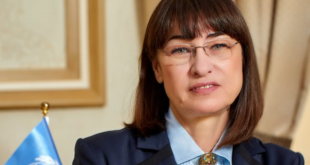Technology can help develop creativity and originality among students of all ages when properly used in education
Ahmed Abdel-Tawwab
Have you ever heard of an educational system based on innovation and creativity? Is there a relationship between the use of technology on the one hand and an increase in the rate of innovation and creativity on the other?
Creativity and innovation are the wings of modern education, helping it to fly to the limits of human imagination. In the light of current technological developments, the growing ability of the new generation of students to use technology, and their ability to communicate with their peers around the world through social-networking platforms, it has become more necessary than ever to exploit this technological revolution to help develop creativity and innovation.
The question is how technology can help to promote creativity and innovation in education. In the past, education was often based on increasing the student’s intake of information, meaning that it was sometimes simply repeated in packed classrooms. Tasks were completed at home where the student was asked to perform homework.
This system is changing today, as information is now at students’ fingertips on smartphones or computers, and this has suggested alternatives to the traditional system of education that simply transferred information in one direction from teacher to pupil.
The use of applications such as Google and YouTube is already an effective way of learning for students during their studies today. Google can answer students’ questions about their research projects, in future students will not need to learn equations, for example, since these are freely available on Google. Instead, their focus will be on how to use those equations. Learning will mean making students more critical and creative.
Creativity is also no longer seen as being a monopoly of artists, and instead it has become a necessary skill for all. American artist Bill Viola has said that creativity is no longer confined to artists alone, for example, but is an essential element in the contemporary human personality, regardless of culture, location or history.
In Arabic, creativity is not synonymous with art alone, but is instead related to the idea of creation and therefore creativity. Creativity in Arabic dictionaries is defined as something that comes first or that is new. Creativity is also the result of an interaction between mental, environmental, social and personal factors giving rise to new solutions to practical or theoretical situations in different scientific or life fields.
Creativity, then, is the ability to deal with familiar things in unfamiliar ways and the ability to split off from the ordinary sequence of thinking. It is thus a skill to be armed with to face the future and adapt to its inevitable changes.
Through the use of technology in education, innovation and creativity can be introduced more into the teaching of subjects such as mathematics, literature and science, where it will also mean teaching differently. In mathematics, students could be asked to solve arithmetical problems using electronic games, for example, collecting points and then moving on to another stage. In literature, students could be asked to offer imaginative alternatives to what a hero should do in a story, where stimulating the imagination is the key to future education.
The role of social-networking platforms in developing creative capabilities has increased. Through platforms such as Pinterest and Instagram, students can integrate technology with education to create a wealth of information resources and make them available locally and globally. By allowing students and schools to participate in online discussions and to share creativity through social-media platforms, there are increasing opportunities for the exchange of ideas, along with increased access to educational resources and support from teachers around the world.
Experts believe that the age of technology has changed our manner of thinking in various ways. A common question is whether technology really affects creativity. Technology cannot inhibit innovation, and it is on the contrary an incentive for it. The difference between creativity and technology is that the first comes from observing the world around us and interpreting it to reach new concepts and ideas, while the second allows us to see the world from a different perspective and get necessary information. Technology and creativity are thus complementary, and they enhance our ability to develop and produce.
Through the various tools that have emerged with technology, such as 3D printing, digital content creation and other forms of digital interaction, students have been given the opportunity to explore new things and express themselves in different ways. Technology has thus contributed to enhancing ambitions and enriching innovative ideas in many ways.
In order to succeed in today’s world, technology must be employed more in education. The task of the teacher in the time of technology is to guide the student to the easiest and fastest techniques available to finish his research. The traditional methods of many educational systems cannot now solve the complex problems faced by students, and certainly they will not be appropriate in the future, as they do not teach students to be creative.
They rely on the mere acquisition of information, and they encourage an inability to employ and benefit from it because too often that information is merely absorbed and not fully understood. Because students merely receive information and do not actively seek it, they are too often unable to use that information for creative purposes.
The reason for the success of technology in education is due to the nature of the activities and programmes it can provide and the elements of excitement that can give students countless opportunities and shift from one type of thinking to another, expanding the horizons of research and inquiry. Technology can encourage students towards greater freedom of expression, imagination and the development of their originality in finding new and appropriate solutions.
The writer teaches in the English Department at the Faculty of Arts, Menoufiya University.
From: Al-Ahram Weekly






